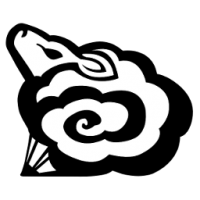Electric Sheep
|
Electric Sheep is a platform for digital artists to share their work. Electric Sheep turns digital-print artwork into "sheep": abstract animations from the artwork that is submitted. Electric combines every artist submission into a collaborative abstract artwork. It is often used as screensavers for both the PC and OSX platform. When Electric Sheep is actively run, a pseudo-random generator alters the sheep and uploads any progress to the Electric Sheep server which then contributes to the ever-changing piece of abstract artwork.
Contents
About
Founded in 1999 by software artist Scott Draves, Draves describes his "sheep" as artificial life. In his portfolio, Draves starts off this description as "...it is software that recreates the biological phenomena of evolution and reproduction though mathematics. The system is made up of man and machine, a cyborg mind with 450,000 participant computers and people all over the Internet." Electric Sheep is a screensaver software that takes digital art and creates animations from this artwork. All the animations are created through the "Flame Algorithm", which Draves created in 1992. This algorithm is what takes the still images and creates them into animations or "flames". [2]
On the Electric Sheep website, users are able to experience samples[3] of "sheep" and download it as well. Founder, Scott Draves also links his portfolio page to expand to other projects and products that he is working on. In addition to Electric Sheep, in the "buy art"
Users and Producers
Draves incorporate open collaboration in the software development of Electric Sheep, but he also offers this collaboration to the users that use Electric Sheep. Users can "vote" for their favorite sheep and based on these results, the most popular sheep get mated together to make new sheep. Users vote on the different animations with the "up" and "down" arrow keys on the computer keyboard. The "Up" arrow is an up vote and the "down" arrow is a down vote. On the electric sheep website, it is also possible for users to see the "lineage" and "family tree" of the digital animations and from what they were created from. Here users can track the votes of which sheeps received the highest votes and thus were mated together. It is also encouraged to partake in the "shepherding" process; the opportunity to "make your own sheep" is presented on the website.
Ethical Topics of Discussion
Open Source
When a project is written in open source code, like Electric Sheep, it is able to benefit from a collection of sources since people are free to add and contribute to Drave's project. Programs like the Mozilla Firefox Browser and Linux operating system are also written in open source. The program is also free and downloadable on Mac and PC in the OS, Windows, and Linux operating systems. The accessibility of the program aligns with the open source attitude that it was founded upon.
However, ethical questions that are raised are what code should be kept and not kept when people collaborate. If someone writes a really critical portion of the code, other than the people that work at Electric Sheep or Scott Draves, that person may deserve more credibility, especially with Electric Sheep's Reusing and Remixing Policy.
- Reusing and Remixing
The reusing and remixing policy allows for the users of Electric Sheep to safely accredit the usage of either screensavers/artwork/etc... This may become a problem because even though the user may accredit the artwork correctly, the artists that contribute their artwork to Electric Sheep may not agree with what their artwork is being used for. This is something to consider since Electric Sheep is an open source program, it is completely run by the people that contribute to it.
The process of voting for Sheeps
The voting process is a way for users to pick and choose which sheeps they like and don't like. The sheeps that get more votes are ranked as the "best sheeps" and the best sheeps are mated together to create new ones. However, the process of voting is not as widespread of a concept especially since the way to up-vote and down-vote are just "up" and "down" arrow keys on a computer. In his porfolio, Draves says, " viewers all over the Internet judge the art on the fly soon after it is generated by their computers." However, viewers may not know that they are actually judging a sheep. They may think that they are just skipping a sheep and going onto the next sheep.
This could be a major flaw in the voting system since certain sheeps would receive undeserved up votes and down-votes. This inaccurate representation of how people react to the software interferes the collaborative intent of generating sheeps.
Creative Commons license
- Crediting usage of Sheeps (Draves & "Electric Sheep)
[The Creative Commons License] that Electric Sheep abides by brings up ethical questioning along the topics of intent and responsibility. Are the ways sheeps are used and generated reflected upon the user/Scott Draves/Electric Sheep/ or the algorithm? [4] On the electric sheep website [5] Draves has a "credit" page that accredits contributors to the code and business.
See Also
Creative Commons
References
- ↑ "Electric Sheep Crowdsourced Evolving Art", Spotworks, LLC, N.D. [1]
- ↑ "Scott Draves - Software Artist", Scott Draves, 2008-2009 [2]
- ↑ "Electric Sheep About", Spotworks, LLC, N.D. [3]
- ↑ "Attribution 3.0 United States (CC By 3.0 US)", Creative Commons, N.D. [4]
- ↑ "Electric Sheep About", Spotworks, LLC, N.D. [5]
